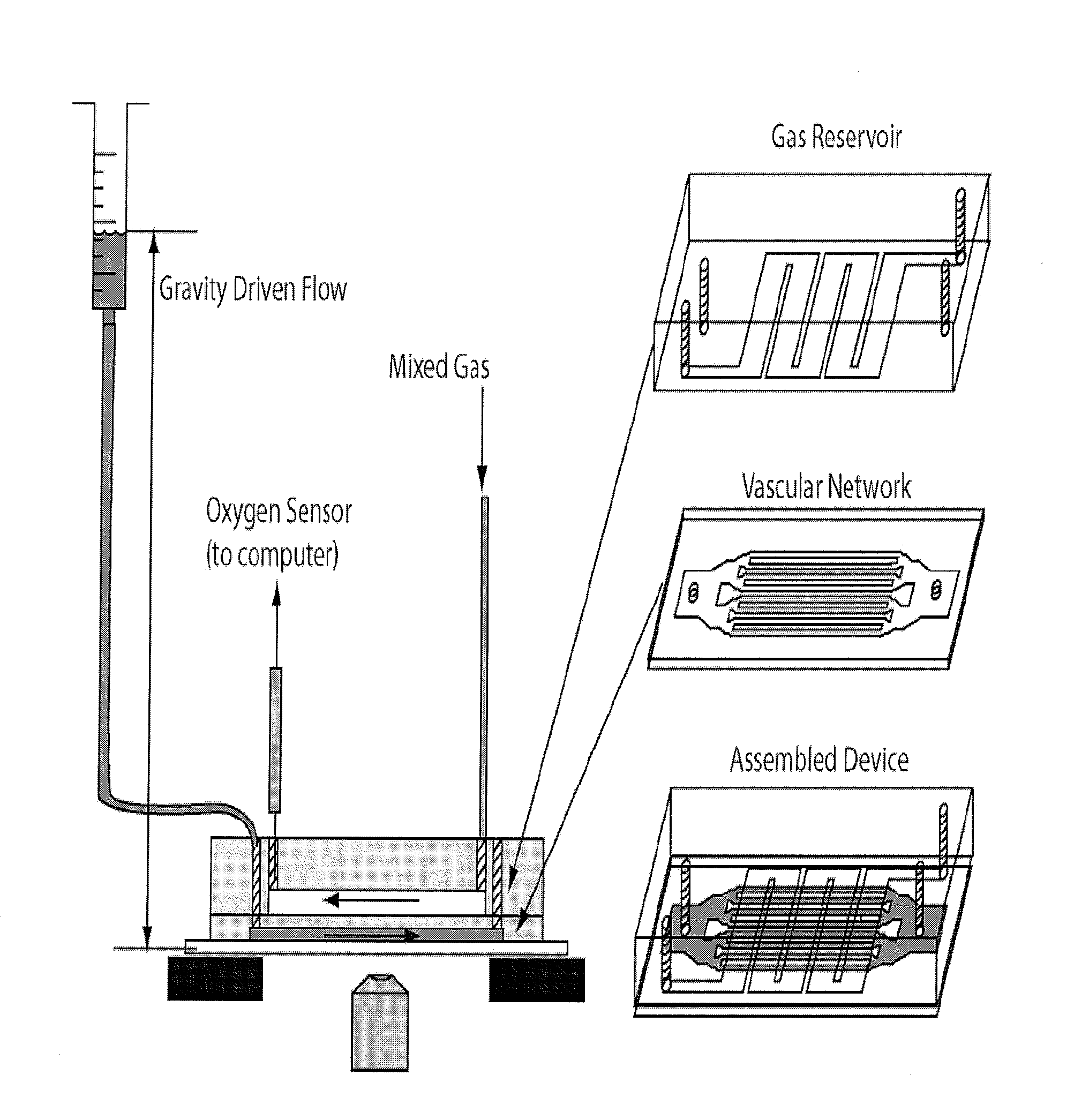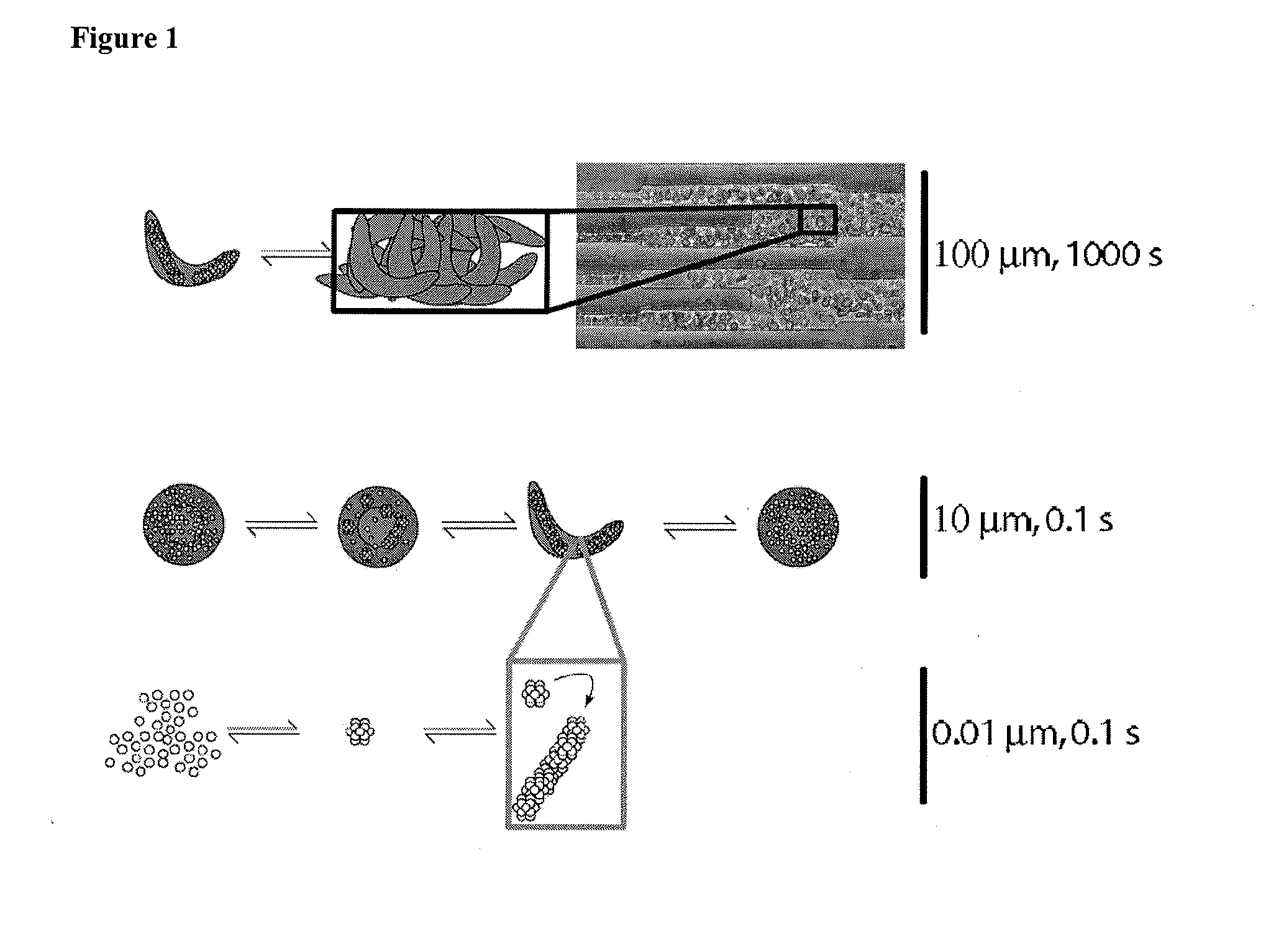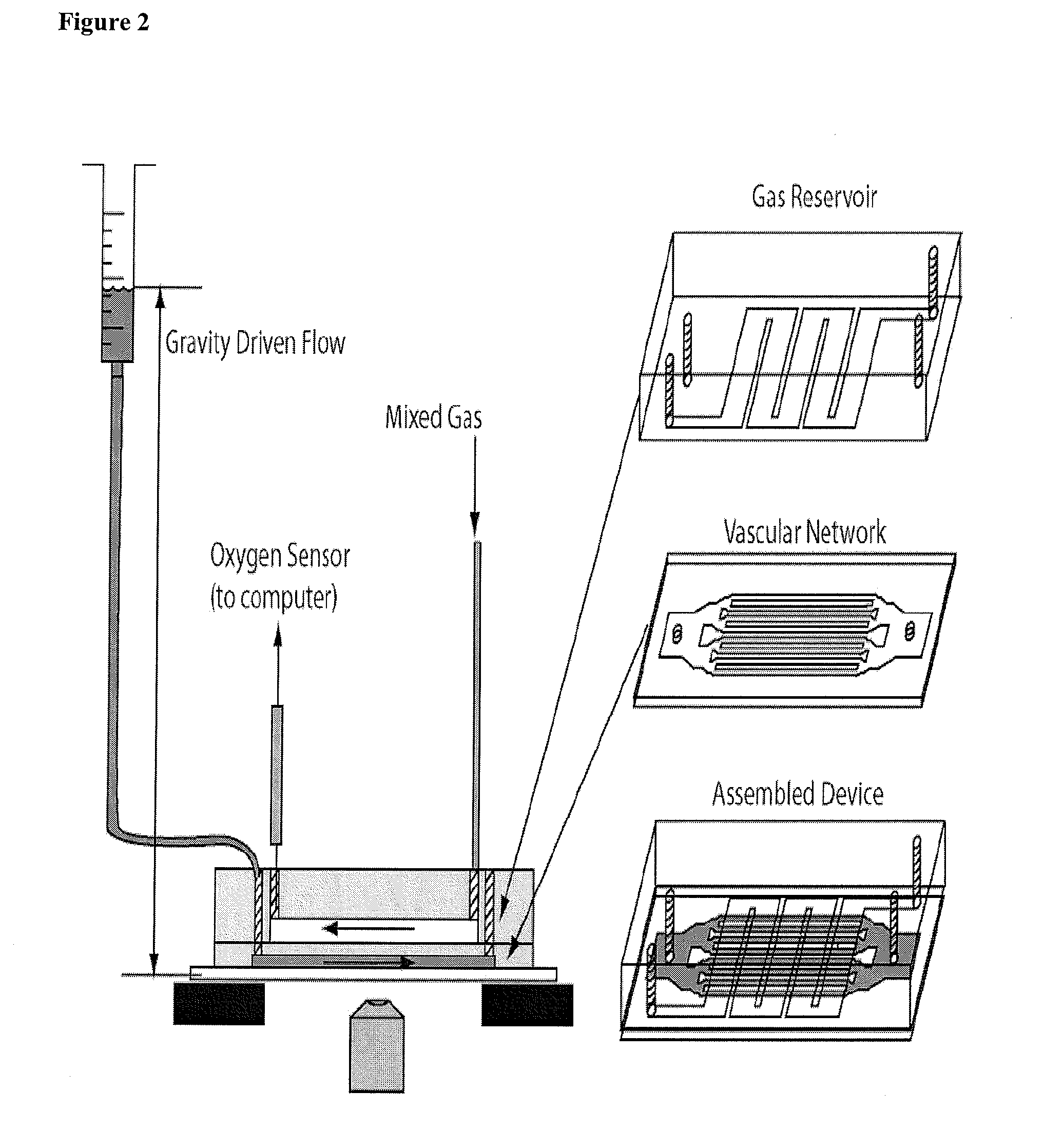In Vitro Microfluidic Model of Microcirculatory Diseases, and Methods of Use Thereof
- Summary
- Abstract
- Description
- Claims
- Application Information
AI Technical Summary
Benefits of technology
Problems solved by technology
Method used
Image
Examples
example 1
[0156]Blood Specimens. Blood specimens were collected during the normal course of patient care at Brigham and Women's Hospital and used in experiments in accordance with a research protocol approved by the Partners Healthcare Institutional Review Board. Blood samples were collected in 5 mL EDTA vacutainers and stored at 4° C. for up to 60 days. Hematocrit was determined using a Bayer Advia 2120 automated analyzer (Bayer, Tarrytown, N.Y.). Hemoglobin fractions were determined using cellulose agar electrophoresis and confirmed by HPLC using a Tosoh G7 column (Tosoh, Tokyo, Japan).
example 2
[0157]Fabrication of Microfluidic Devices. A multilayered microfluidic network was fabricated in poly(dimethylsiloxane) (PDMS) using previously described soft lithography techniques. Duffy, D., J. McDonald, et al. (1998). “Rapid prototyping of microfluidic systems in poly(dimethylsiloxane).”Analytical Chemistry 70(23): 4974-4984. The multilayered device consists of a 150 μm thick gas reservoir separated from a 12 μm vascular network by a 150 μm PDMS membrane. SU8 photoresist (Microchem, Newton, Mass.) was used to fabricate the mold masters for both the vascular and gas channels. The vascular network was fabricated to be 12 μm thick by spin coating SU8-2015 onto a 4-inch silicon wafer at 3000 rpm for 30 seconds. This wafer was then softbaked at 65° C. for 1 minute and 95° C. for two minutes. Next the SU8 coated substrate was placed into soft contact with a high-resolution transparency photomask and exposed with UV (365 nm) light at 100 mJ / cm2. This substrate was then hardbaked at 65°...
example 3
[0159]Experimental Setup. The assembled microfluidic device was mounted on an inverted microscope (Nikon TE-3000) and the fluidic and gas sources were connected as shown in FIG. 2. The microfluidic channels begin 4 mm wide, then split into roughly equal total cross section areas until the smallest dimension (7, 15, 30, or 60 μm) which then traverses 4 cm until the channels recombine sequentially at the outlet. The blood velocity was monitored most often in the 250 μm channels which were fed by 4 60-μm, 8 30-μm, 16 15-μm, or 16 7-μm channels depending on the device studied. Two rotometers controlled the gas mixture fed through the oxygen channels. The gas mixture diffuses rapidly through PDMS to initiate occlusion or flow. The outlet gas concentration was monitored with a fluorescent oxygen probe (FOXY Fiber Optic Oxygen Sensor, Ocean Optics, Dunedin, Fla.) to monitor the gas concentrations within the gas microchannels. Gravity-driven flow was used to inject blood into the vascular n...
PUM
| Property | Measurement | Unit |
|---|---|---|
| Thickness | aaaaa | aaaaa |
| Thickness | aaaaa | aaaaa |
| Thickness | aaaaa | aaaaa |
Abstract
Description
Claims
Application Information
 Login to View More
Login to View More - R&D
- Intellectual Property
- Life Sciences
- Materials
- Tech Scout
- Unparalleled Data Quality
- Higher Quality Content
- 60% Fewer Hallucinations
Browse by: Latest US Patents, China's latest patents, Technical Efficacy Thesaurus, Application Domain, Technology Topic, Popular Technical Reports.
© 2025 PatSnap. All rights reserved.Legal|Privacy policy|Modern Slavery Act Transparency Statement|Sitemap|About US| Contact US: help@patsnap.com



